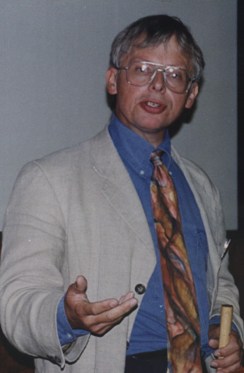
A group of researchers at the University of Leeds has suggested that storing carbon dioxide deep below the Earth’s surface could be a safe and long-term solution to one of the planet’s major contributors to climate change. Emily Baldwin reports.
Geoscientist Online 11 December 2007
For seven years, in the Miller oilfield in the North Sea, BP has been pumping seawater into the porous sandstone-based oil reservoir to encourage the flow of oil and maintain pressure in the reservoir. PhD research scientist Stephanie Houston studied the water pumped out with the oil, and made the surprising discovery that it was significantly enriched in silica. Silicates were previously thought to be very slow to react, but the flow of water had increased the rate of silica production – silica that had dissolved in the seawater in less than a year.
If CO
2 is pumped through the reservoir then it should also react with the water and minerals there to become stabilized and remain in the ground for thousands of years, as Professor Bruce Yardley (picture), who led the research, explains. “If CO
2 is injected underground we hope it will react with the water and minerals there in order to become stabilised. That way it spreads into its local environment rather than remaining as a giant gas bubble which might ultimately seep to the surface.”
CO
2 sequestration projects have been tackled in the past, but largely to increase oil recovery rates rather than as a direct solution to the problems of climate change. The UK government recently announced the need to draw on renewable energy resources - and launched a competition to build one of the world’s first carbon capture and storage plants (CCS) as part of a major drive to decarbonise energy sources. Government Business and Enterprise Secretary John Hutton said: “The launch of the competition puts the UK on track to build within seven years one of the world’s first commercial-scale CCS projects on a coal-fired power station”. CCS plants must be able to capture the carbon in fossil fuels as CO
2 that will then be committed to long-term storage in geological formations such as depleted oil and gas fields. Post-combustion CCS technology can be retro-fitted to the vast proportion of existing and planned coal-fired power stations, and so can be applied to coal-stations all over the world. However, two major challenges face the designers of a successful CCS: the energy required to perform the clean-up operation must not exceed that already being produced, and the CO
2 will have to remain in the ground for at least 1000 years, to allow enough time for the underground reduction reactions to take place.
Although the effects of CO
2 sequestration on the Earth’s climate has yet to be tested, the research conducted by the University of Leeds team suggests that this technique has long-term potential for safely storing the main by-product of the world’s power stations, instead of allowing it to escape into the atmosphere and further contributing to global warming.
Ref: Rapid fluid-rock interaction in oilfield reservoirs. 2007. Stephanie J. Houston, Bruce W.D. Yardley, P. Craig Smalley and Ian Collins. The Geological Society of America, Geology December 2007 v35, 12, p1143-1146.